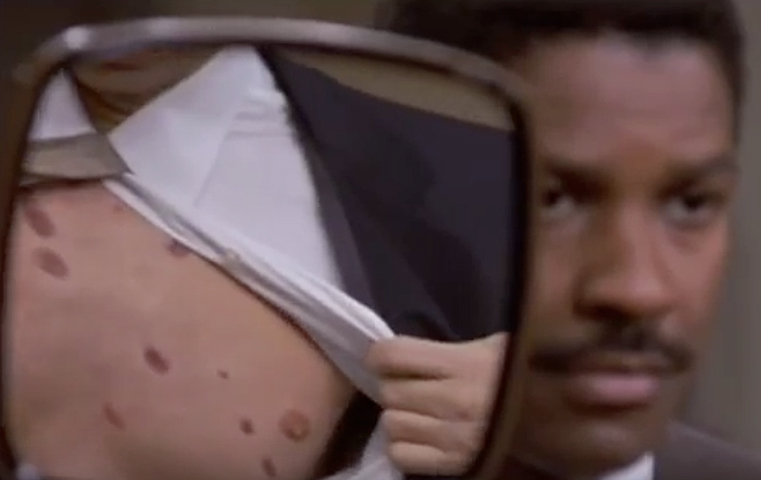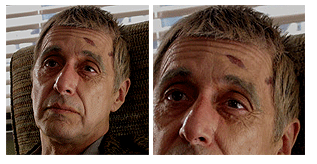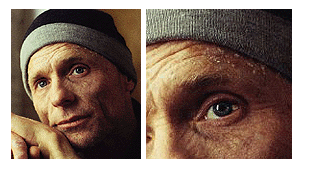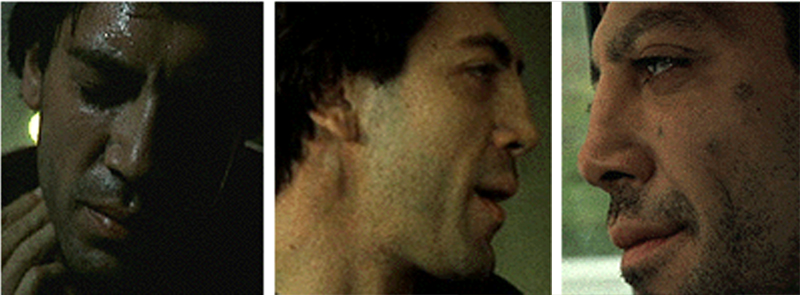HIV disease has been irresistable to filmmakers, especially because certain aspects are particularly visible. To their credit, producers have presented the condition responsibly, featuring human tales and sympathetic portrayals.

"Philadelphia"
A lawyer portrayed by Tom Hanks sues his former firm after he is fired for having AIDS. The character's purple lesions of Kaposi's sarcoma (KS) are crucial to the plot. An identified forehead tumor leads to the discovery of his HIV status.
In a dramatic dermatologic moment, Hanks' lawyer, played by Denzel Washington uses a mirror to show Hank's many chest plaques to the jury. KS is a tumor composed of abnormal blood vessel cells. It is caused by a virus that spreads when the immune system is impaired. Treatments have included freezing lesions, radiation treatments and injecting chemotherapy. Medicines that restore immune cell function to people with HIV disease usually cause the tumors to recede.

Al Pacino made another foray into the skinema zone with his Emmy-winning turn as a conflicted HIV positive lawyer in the mini-series, "Angels in America." His attempts to conceal his homosexuality were dashed once KS lesions made a court appearance. Before anti-retroviral treatment, the physical presence of KS added psychological and social stigma to the list of indignities of AIDS. Until a permanent cure or vaccine is developed, AIDS is certain to play a recurring role in movies.

Long before she played a butt-kicking archeologist in "Tomb Raider," superstar Angelina Jolie played a bisexual model with AIDS. In "Gia," Jolie shows KS as well as hair loss. In reality, KS has not proved as prevalent in women with HIV disease. This may be due to a lower rate of exposure to the herpes type virus that causes the tumors.

As an HIV positive transvestite in “Dallas Buyer’s Club,” actor Jared Leto earned an Oscar for Best Supporting Actor. The film is set in the late 1980’s, at the dawn of treatments for AIDs. Leto works with HIV infected cowboy/ entrepreneur Matthew McConaughey to rustle up and sell non-FDA approved treatments.

We now know that KS it is the result of infection with the human herpes virus 8 (HHV-8), which is separate from the viruses that cause AIDs (HIV) and lip and genital herpes (HSV). While many may harbor HHV-8, healthy immune systems keep the virus suppressed. Infection with HIV damages the immune response, allowing bruise-like lesions to develop on the skin and internal organs. Now with treatments for HIV, it is possible to put KS into remission. Because of this, KS is much less common since treatment for HIV has become available.

Ed Harris, "The Hours"
Even with treatments to control the virus, AIDS is a particularly cinematic condition. Certainly, there are plenty of skin signs of this troubling illness. In "The Hours," Ed Harris shows one of the most common conditions dermatologists treat: seborrheic dermatitis. When confined to the scalp, seb derm is known to us all as "dandruff." But this psoriasis-like red, itchy, scaly inflammation can flare and spread down the face in conditions with an abnormal immune system, such as HIV disease. Tar, zinc, and selenium sulfide shampoos can help, as can topical anti-inflammatories like cortisone creams or pimecrolimus (Elidel).
In "Before Night Falls," Spanish actor Javier Bardem joins a long line of actors assaying the arduous aspects of AIDS. Like Hanks' role, Bardem shows the dull purple plaques of KS. In addition, Bardem's poet experienced night sweats and a swollen lymph node. Symptoms like these, if ongoing, should suggest evaluation for presence of the virus. Many people who are HIV positive do not realize that they are infected. While there has been, and continues to be ignorance about and prejudice directed toward those infected with HIV, film makers have consistently depicted complex individuals coping with a life-threatening condition.
« Back




